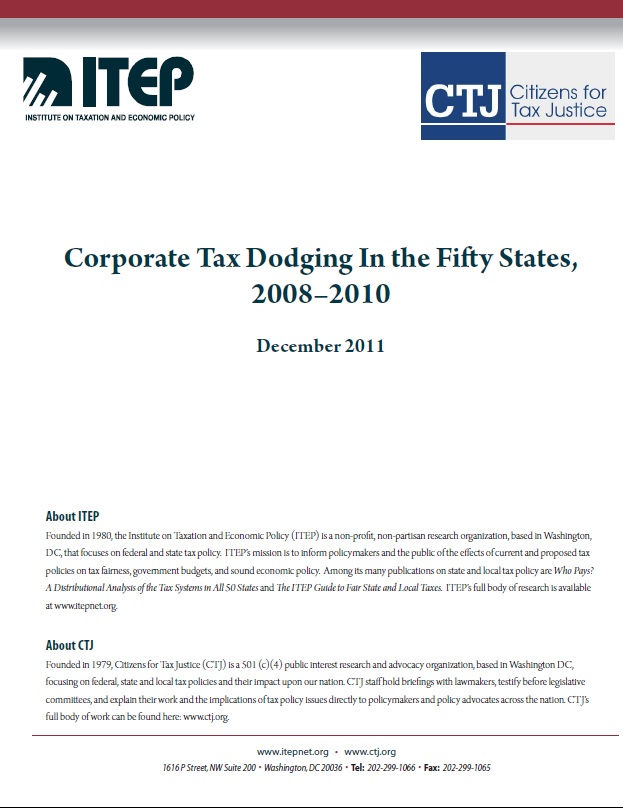Just as President Obama caved at the end of last year to demands that he extend the Bush tax cuts for even the richest Americans, it looked like he was ready to end this year by caving on the debate over payroll tax cuts. Then, strangely, House Republicans refused to accept the surrender.
President Obama and Democratic leaders in  Congress made a huge compromise before they even began negotiating with Republicans. Economists agree that the government measures most likely to boost job creation are spending measures (including things like food stamps, infrastructure, hiring teachers) but President Obama decided to focus on a tax cut in order to appeal to Republicans.
Congress made a huge compromise before they even began negotiating with Republicans. Economists agree that the government measures most likely to boost job creation are spending measures (including things like food stamps, infrastructure, hiring teachers) but President Obama decided to focus on a tax cut in order to appeal to Republicans.
And he did not choose the tax cut most likely to boost consumer spending by putting money in the hands of low- and middle-income people. That would be the Making Work Pay Credit, which was allowed to expire at the end of 2010. Instead, he proposed extending and expanding the payroll tax cut that was enacted for 2010, and which was originally proposed by Republicans.
So President Obama and Democratic leaders in Congress proposed that this year’s payroll tax cut be extended into next year and expanded. They insisted that Congress not attach controversial policies like hurrying approval of the Keystone XL Pipeline extension, and they proposed that the cost be offset by taxing millionaires. The President and Democratic leaders eventually surrendered on all of this.
Citizens for Tax Justice estimated that the millionaire surcharge would only affect one-fifth of one percent of taxpayers and that those affected would see their overall taxes go up by an average 2.1 percent. But Congressional Republicans objected that this would burden “job creators,” so the Democrats agreed to drop the millionaire surcharge.
But Republicans in the Senate were still not happy. Senate GOP leader Mitch McConnell introduced a bill to extend the existing payroll tax cut and offset the costs with the types of cuts in public services that Republicans usually support. Strangely, a majority of Republicans voted against this bill, too.
Even the number two Republican in the Senate, Jon Kyl, opposed McConnell’s bill and said he would support extending the payroll tax cut only if it was paired with another extension of the Bush tax cuts. Our figures comparing different types of tax cuts illustrated how this was essentially a demand that the payroll tax cut can only be enacted along with much, much larger tax cuts for the rich (like the Bush tax cuts).
Senate Majority Leader Harry Reid said the Senate would not approve must-pass spending measures before the end of the year without extending the payroll tax cut through 2012. But Senator Reid backed down and made a deal with Senator McConnell. The payroll tax cut would be extended for just the first two months of next year, and it would not be expanded. It would be attached to a provision requiring a quicker approval of the controversial oil pipeline project. And, of course, there would be no tax on millionaires. This bill passed the Senate with 89 of the chamber’s 100 members voting in favor.
President Obama endorsed the deal. It would at least get Congress and the country through the holidays, after which lawmakers could take up this debate again and hash out whether the payroll tax cut should be extended for the rest of the year.
 Then something strange happened. Republicans in House refused to approve the Senate bill. They voted along party lines to appoint a conference committee iron out differences between the Senate-passed bill and a bill passed earlier by the House. But the Senate had already left town.
Then something strange happened. Republicans in House refused to approve the Senate bill. They voted along party lines to appoint a conference committee iron out differences between the Senate-passed bill and a bill passed earlier by the House. But the Senate had already left town.
The bill passed by the Republican majority in the House (H.R. 3630) would extend the existing payroll tax cut for a year, but because House Republicans consider this an enormous concession, the bill includes many policy provisions championed by conservatives. It would offset the cost of the payroll tax cut with cuts in public services, which is the opposite of what the economy needs right now. It includes cuts and restrictions on unemployment insurance, delays on environmental rules and, of course, a faster approval for the oil pipeline project.
It’s awfully tempting to tune out of national politics entirely right now and enjoy some eggnog, except for one thing: Millions of Americans are struggling to find decent work and the House of Representatives has done everything imaginable to block anything that might change that. If lumps of coal were environmentally friendly, we’d encourage everyone to send them by the truckload to the House members blocking progress.


 economics
economics


 Gingrich’s attempt to hide his past position on this issue highlights how
Gingrich’s attempt to hide his past position on this issue highlights how  After long opposing the extension of a tax on millionaires supported by 72 percent of New Yorkers, Democratic Governor Andrew Cuomo partially reversed himself and proposed a plan that would raise more revenue from the very wealthy and make the state’s tax system less regressive.
After long opposing the extension of a tax on millionaires supported by 72 percent of New Yorkers, Democratic Governor Andrew Cuomo partially reversed himself and proposed a plan that would raise more revenue from the very wealthy and make the state’s tax system less regressive.
 President Obama’s speech on Tuesday in Kansas, during which he said,
President Obama’s speech on Tuesday in Kansas, during which he said,



